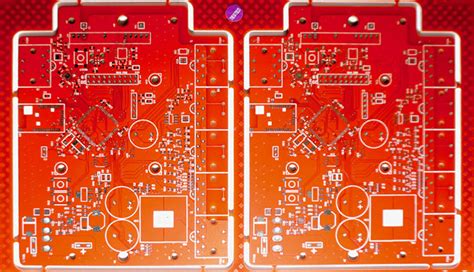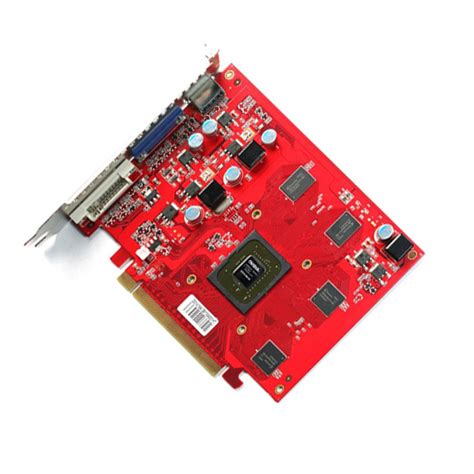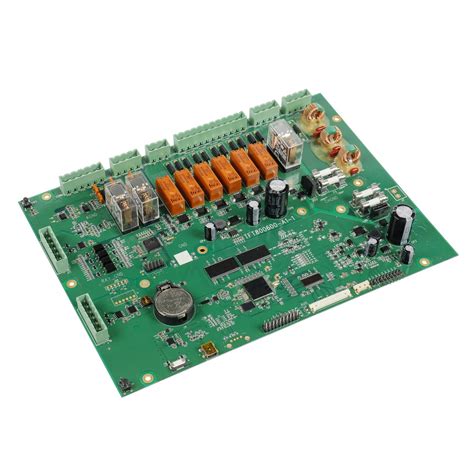Understanding Contract PCB Assembly for Efficient Production
Key Takeaways
Understanding contract PCB assembly is crucial for businesses looking to enhance their manufacturing processes. By opting for this service, manufacturers can leverage the expertise and resources of specialized firms, thereby focusing on their core competencies. The benefits of partnering with a contract assembler include cost efficiency, reduced lead times, and access to advanced technologies that might otherwise be financially unfeasible. The processes involved in PCB assembly may vary but generally include design reviews, prototyping, assembly, and testing. Adhering to best practices such as thorough documentation, regular communication with the contractor, and rigorous quality checks can significantly enhance production efficiency. Making an informed choice when selecting a contract partner is also paramount; businesses should look for those with a strong track record in quality control and innovation within the field of PCBA. As trends continue to evolve, staying updated on the latest advancements can provide manufacturers with a competitive edge. In summary, embracing contract PCB assembly not only simplifies production but also opens avenues for improved scalability and operational excellence.
Introduction to Contract PCB Assembly
Contract PCB assembly (PCBA) has become a key factor in the electronics manufacturing landscape, enabling companies to produce high-quality products while optimizing costs and resources. By outsourcing PCB assembly tasks to specialized partners, manufacturers can leverage extensive expertise and state-of-the-art technology, which significantly enhances production efficiency. This collaborative model allows businesses to focus on their core competencies, such as design and marketing, while relying on these specialized partners for the intricate processes involved in printed circuit board assembly.
Furthermore, contract PCB assembly simplifies scaling operations. As demand fluctuates, manufacturers can easily adjust their production volumes without the burden of maintaining in-house facilities that might be underutilized during slower periods. The flexibility offered by contract partnerships also enhances responsiveness to market changes and customer needs.
“Utilizing contract manufacturing not only boosts operational efficiency but also mitigates risks associated with technological changes,” states industry expert Alex Turner.
It’s essential to choose the right partner for your PCBA needs. Working with a knowledgeable and resourceful provider can lead to smarter process optimizations that improve product turnaround times. Collaborative efforts often lead to innovative solutions tailored specifically for unique project requirements, fostering an environment where quality control is paramount and every circuit board meets strict standards.
In summary, embracing contract PCB assembly is not merely a financial decision; it’s a strategic approach that permits businesses to enhance their production capabilities while maintaining high standards of quality and innovation in electronics manufacturing.
Benefits of Contract PCB Assembly for Manufacturers
The practice of contract PCB assembly offers numerous advantages for manufacturers looking to enhance their production capabilities. One of the primary benefits is the cost-effectiveness associated with outsourcing PCBA processes. By partnering with specialized vendors, manufacturers can reduce overhead costs related to labor, equipment maintenance, and facility management. This approach allows companies to allocate financial resources more efficiently toward core business activities.
Additionally, contract PCB assembly providers often leverage advanced technologies and skilled labor, which can significantly improve production quality and speed. Utilizing such expertise ensures that the PCB assembly processes adhere to high standards, ultimately leading to lower defect rates and improved product reliability. A detailed comparison of internal production versus outsourcing is illustrated below:
| Aspect | Internal Production | Contract PCB Assembly |
|---|---|---|
| Cost | High (overhead expenses) | Lower (fixed costs) |
| Flexibility | Limited | Highly adaptable |
| Production Speed | Slower | Typically faster |
| Access to Innovation | Restricted | Enhanced capabilities |
| Quality Control | Variable | Consistent |
Furthermore, this model enables manufacturers to focus on research and development, allowing them to innovate while maintaining competitive advantage. By outsourcing PCBA, companies can scale operations quickly in response to market demands without the constraints tied to facility expansions or hiring challenges.
Finally, partnering with a reputable contract manufacturer fosters lasting relationships that can lead to continuous improvement in processes and technologies over time. Manufacturers benefit not only from immediate cost savings but also from long-term strategic advantages that significantly enhance their operational efficiency in a competitive landscape.
Key Processes in PCB Assembly
The pcb assembly process is a multifaceted operation that requires careful planning and execution to ensure reliability and quality in the final product. It typically begins with the design phase, where engineers create detailed layouts that indicate the placement of components. This is followed by the procurement of materials, which includes selecting high-quality pcba components that meet specific project requirements. Once materials are gathered, the assembly begins—this step usually involves automated machinery and manual labor to place components on the printed circuit board (PCB).
Soldering, an essential part of pcb assembly, can be achieved through several techniques such as reflow or wave soldering, ensuring robust connections. After soldering, each board undergoes rigorous inspection to identify any defects or irregularities. Testing is crucial and may involve functional testing and electrical verification to confirm that each PCB operates as intended. Throughout this lifecycle, close attention to processes enhances production efficiency and minimizes waste, directly impacting overall project timelines and costs. By adhering to these key processes in pcb assembly, businesses can optimize their manufacturing operations while delivering high-quality products that meet market demands.
Best Practices for Efficient Production
When it comes to contract PCB assembly, implementing best practices can make a significant difference in the efficiency and quality of your PCBA processes. First and foremost, establishing a clear communication channel with your assembly partner ensures that all project requirements, from design specifications to timelines, are well understood. Proper documentation is another key aspect; maintaining detailed records of design changes, components used, and production methodologies not only aids in efficiency but also enhances traceability during quality assurance checks.
Adopting lean manufacturing principles can further streamline processes. This includes minimizing waste and focusing on continuous improvement to optimize workflow. Additionally, investing in advanced technologies such as automated assembly equipment can drastically reduce production time while improving precision in the PCB assembly process. Regular training for staff involved in PCBA operations is essential; well-trained employees tend to work faster and more accurately, which is crucial for meeting tight deadlines without compromising quality.
Moreover, conducting routine audits of both the equipment and materials used can prevent potential disruptions. Establishing a robust feedback loop can also help identify bottlenecks early, enabling quick resolutions to maintain production flow. By integrating these best practices, manufacturers can significantly boost the efficiency of their contract PCB assembly operations while ensuring a high standard of quality in their finished products.

Choosing the Right Contract PCB Assembly Partner
Selecting the right contract PCB assembly partner is crucial for the success of any electronic project. It is important to evaluate potential partners based on several key factors that directly impact the quality and efficiency of PCBA. First and foremost, consider their experience and expertise in the industry. A partner with a proven track record in pcb assembly can offer valuable insights and innovative solutions that enhance production processes. Additionally, assessing their technological capabilities is essential; look for partners who utilize advanced machinery and adhere to up-to-date industry standards, ensuring high-quality outcomes.
Moreover, communication plays a vital role in this partnership. A manufacturer that prioritizes clear and consistent communication can help navigate any unforeseen challenges that arise during the pcb assembly process. Don’t overlook their ability to provide comprehensive support throughout project development, from initial design to final delivery.
Lastly, conducting thorough due diligence—such as checking references, reading reviews, and even visiting facilities—will ensure you choose a partner committed to delivering quality PCBA services. With the right contract PCB assembly partner on board, you can achieve not only efficiency but also elevate the overall success of your projects.
Quality Control in Contract PCB Assembly
Quality control is a pivotal aspect of contract PCB assembly that directly impacts the overall success and reliability of the final product. In the realm of PCBA manufacturing, ensuring that every step of the process adheres to strict quality standards is essential. This involves meticulous inspections during various stages, including component sourcing, fabrication, and assembly. One of the principal methods to maintain quality is the implementation of rigorous testing protocols, such as Automated Optical Inspection (AOI) and Functional Testing (FT). These techniques not only detect defects early but also help in maintaining consistent production standards. Additionally, fostering a culture of continuous improvement amongst teams can significantly enhance PCBA quality. By investing time in training and employing best practices, companies can create an environment where quality is prioritized. Furthermore, collaborating with partners who demonstrate a commitment to robust quality management systems ensures that the final assemblies meet industry specifications and customer expectations. Ultimately, effective quality control within contract PCB assembly processes leads to improved reliability, user satisfaction, and overall project success.
Innovations and Trends in PCB Assembly
The landscape of PCB assembly is continually evolving, driven by new technologies and consumer demands. One notable trend is the incorporation of automation in the PCBA process, which enhances efficiency and reduces human error. Automated equipment can streamline repetitive tasks, allowing for increased production rates and consistency in quality. Furthermore, advancements in materials science have led to the development of lighter, more durable substrates that can withstand harsher operating environments, making pcb assembly more versatile than ever before. Another innovation is the rise of smart manufacturing techniques, such as IoT-enabled devices that monitor production in real time, ensuring that any inefficiencies are quickly addressed. Additionally, techniques like selective soldering and advanced surface mount technology (SMT) are setting new standards for precision in PCBA, reducing defects and improving overall yield. As manufacturers seek to meet increasing global demand for electronic products, embracing these innovations not only enhances production but also positions companies to compete effectively in a fast-paced market. Understanding these trends is crucial for stakeholders aiming to harness the full potential of contract PCB assembly services while delivering high-quality solutions.

Case Studies: Successful Implementations of Contract PCB Assembly
In recent years, several companies have turned to contract PCB assembly (PCBA) to enhance their production efficiency and reduce time-to-market. For instance, a tech startup specializing in wearable devices collaborated with a renowned contract PCB assembly service provider to create a new line of smart fitness trackers. By leveraging the expertise of the assembly partner, they were able to streamline their processes, resulting in a 50% reduction in production time. This partnership allowed the company to focus on their core competencies, such as software development and customer experience, while the assembly partner ensured high-quality manufacturing standards.
Another case involves an automotive electronics manufacturer that faced challenges with scaling their production capability. By shifting their pcb assembly needs to an experienced contract partner, they not only improved their output but also benefited from advanced manufacturing techniques such as automated pick-and-place systems and reflow soldering. This transition led to a significant decrease in defects and overall production costs, reinforcing the value of outsourcing specialized processes in the competitive landscape of manufacturing.
These case studies underline how strategic partnerships in PCB assembly can result in improved product quality and efficiency. They highlight that investing in a capable contract PCB assembly partner can bring about substantial long-term benefits, making it a crucial strategy for companies looking to optimize their production efforts.

Conclusion
In summary, contract PCB assembly offers a myriad of advantages that can significantly impact production efficiency. By leveraging the expertise of specialized PCB assembly firms, manufacturers can not only reduce costs but also enhance the quality of their products. The streamlined processes encompassed in PCBA allow for quicker turnaround times, ensuring that projects meet tight deadlines without compromising on quality. Adopting best practices within the realms of planning, communication, and execution can further maximize the benefits derived from contract PCB assembly. As industries continue to evolve, embracing innovations and maintaining quality control are vital for sustaining competitive edges. Ultimately, a well-chosen partner in PCBA can lead to successful implementations that drive both current projects and future growth.
FAQs
What is contract PCB assembly?
Contract PCB assembly, or PCBA, involves outsourcing the manufacturing process of printed circuit boards to specialized companies. These providers handle the assembly of the electronic components onto the PCB, allowing manufacturers to focus on their core competencies.
What are the benefits of using a contract PCB assembly service?
Utilizing a contract PCB assembly service comes with several advantages. These include reduced production costs, access to advanced technology, improved scalability, and enhanced quality control. By partnering with experts in PCBA, companies can streamline their manufacturing processes and achieve faster time-to-market.
How does the PCB assembly process work?
The PCB assembly process generally includes designing the circuit layout, sourcing electronic components, assembling them on the board, and testing for functionality. Each step is crucial in ensuring that the final product meets quality standards.
What should I consider when choosing a contract PCB assembly partner?
When selecting a partner for PCB assembly, consider their experience, quality certifications, production capacity, and customer reviews. It’s vital to choose a provider that understands your specific needs and can deliver customized solutions.
How can quality control be ensured in contract PCB assembly?
Quality control in PCBA is achieved through rigorous testing methods such as Automated Optical Inspection (AOI), X-ray inspection for solder joints, and functional testing of assembled boards. Maintaining strict quality standards helps ensure reliability in your products.
Are there any current trends in PCB assembly?
Current trends in PCB assembly include increased automation, the adoption of lead-free soldering techniques, and an emphasis on eco-friendly materials. These innovations not only enhance efficiency but also align with industry sustainability goals.







